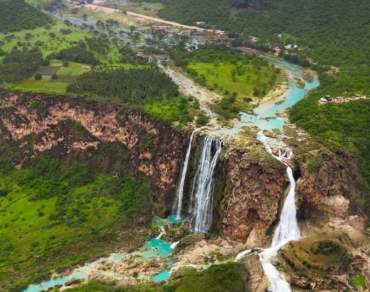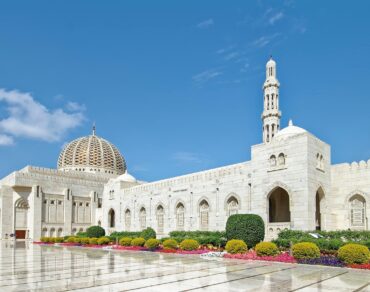
-
Oman Tour Packages > Wiki > Discover the Rich History of Oman at the National Museum

Discover the Rich History of Oman at the National Museum
The National Museum Muscat in Oman stands proudly in Muscat’s cultural district and preserves over 7,000 years of our nation’s compelling history within its walls.
This magnificent institution showcases ancient artifacts, maritime treasures, and royal collections that highlight Oman’s rich heritage. Visitors can trace the nation’s path from prehistoric settlements to modern-day achievements through the museum’s extensive exhibits.
In this piece, you’ll get to know the museum’s most remarkable exhibits that feature archeological discoveries, traditional maritime displays, and stunning Islamic art collections. The cultural landmark provides interactive learning spaces that appeal to history enthusiasts and curious minds alike.
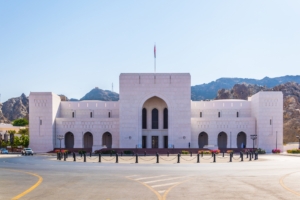
Journey Through Time: Exploring Oman’s Ancient Past
The National Museum of Muscat, Oman’s archeological galleries, tells a remarkable story of our ancient past. Evidence shows human presence dating back over 100,000 years. The first settlers arrived during favorable climate conditions.
Prehistoric settlements and early civilizations
Our earliest galleries showcase remarkable stone tools found in Dhofar’s mountains. These include rare hand axes from humanity’s first migration out of Africa. These artifacts depict our ancestors who crossed the Arabian Peninsula during its lush, habitable period. The evidence shows our people started animal husbandry around 5500 BCE. This marked a vital change from hunting and gathering in prehistoric life.
Archaeological discoveries and artifacts
Our proud collection features fascinating treasures from recent excavations:
- A unique 7,000-year-old tomb containing dozens of individuals
- Bronze Age copper tools and ornamental stones from ancient Magan
- Ritual stone monuments known as triliths
- Prehistoric fishing equipment from coastal settlements
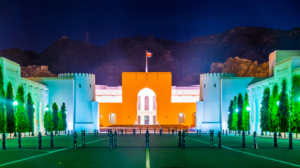
Progress of Omani society through the millennia
The National Museum of Oman Muscat, displays distinct periods of our society’s growth. Ancient Sumerian texts from 2300 BCE recognized our region as a vital copper source. This established Magan as a key trading partner. Our collection shows how our ancestors grew from coastal communities into skilled maritime traders. They built connections with civilizations from Mesopotamia to the Indus Valley.
Our archeological galleries highlight our society’s advancement through the Bronze Age (3300-1300 BCE). Metal production flourished during this time, and the Iron Age brought major technological advances. These exhibits tell more than just the story of artifacts—they reveal our people’s ingenuity and adaptability over time.
Maritime Legacy and Trade Relations
The National Museum of Oman’s maritime gallery celebrates our nation’s seafaring heritage that shaped us into a powerful trading empire. Carefully curated exhibits tell compelling stories of our ancestors who became skilled at conquering the seas.
Historic maritime routes and navigation
Skilled navigators developed sophisticated techniques well before modern tools existed. The National Museum of Oman Muscat, displays the ingenious kamal – a simple wooden board with string that sailors used to calculate latitude from stars. The works of renowned navigator Ahmad Ibn Majid, including his celebrated manuscript Alnunyia Al Kubrah, show our expertise in celestial navigation.
Traditional shipbuilding techniques
Ancient vessels that dominated Indian Ocean trade stand as centerpieces of our maritime collection. The craftsmanship of traditional dhow building showcases skilled artisans who used:
- Teak wood imported from India
- Coconut fiber ropes for binding planks
- Shark liver oil as a natural sealant
- Hand-sewn techniques with over 37,000 precise holes

Cultural exchange through sea trade
Maritime trade routes between East Africa and China created an array of cultural exchanges. Ships regularly reached Chinese ports like Guangzhou by the 9th century CE. They carried precious cargo, including:
- Frankincense and myrrh
- Textiles and precious metals
- Spices and exotic woods
- Ceramics and silk
The Jewel of Muscat demonstrates our seafaring excellence. This reconstruction of a 9th-century vessel sailed 6,000 kilometers to Singapore in 2010, proving our traditional shipbuilding methods’ remarkable capabilities.
Islamic Heritage and Royal History
The spiritual experience that has shaped our nation since 627 CE comes alive in our dedicated Islamic heritage galleries. The National Museum of Oman proudly displays an exceptional collection that reflects our deep-rooted Islamic traditions and royal legacy.
Islamic art and architecture collections
Exquisite Qur’anic manuscripts in our galleries tell the story of Islam’s arrival in Oman. Rare religious texts and architectural elements showcase Arabic calligraphy’s development. Our collection features geometric patterns, floral motifs, and arabesque decorations that once adorned historic mosques and civic buildings, showing Islam’s artistic influence.
Royal artifacts and ceremonial items
The traditional Omani khanjar stands as the centerpiece of our royal collection with its profound cultural significance. These ceremonial daggers showcase:
- Distinctive 45-degree bent scabbards
- Intricate silver and gold thread embroidery
- Handles crafted from precious materials
- Traditional designs dating back to the 16th century
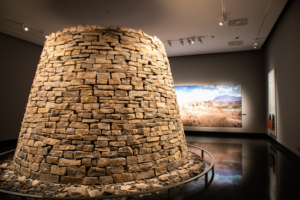
Religious and cultural traditions
Religious tolerance stands as a cornerstone of our heritage, highlighted through exhibits that showcase the harmonious coexistence of different Islamic schools of thought in Oman. Our collection has artifacts from the Ibadi, Sunni, and Shia traditions that show how these diverse interpretations of Islam have enriched our cultural heritage.
The National Museum of Oman Muscat, preserves memories of important religious celebrations, including traditional Eid festivities and historic Hajj journeys. Multimedia displays bring spiritual practices to life that continue to shape our national identity, from daily prayers to annual celebrations that unite our community.
Interactive Learning Experience
The National Museum of Oman brings history to life through state-of-the-art technology and interactive experiences. The museum space turns learning into an adventure by blending traditional exhibits with modern features that make each visit memorable.
Digital installations and multimedia displays
The museum houses 33 digital immersive experiences that change how visitors connect with heritage. Key features include:
- Ultra-HD cinema showcasing Omani history
- Interactive touch screens throughout the galleries
- Sensory devices that convey authentic aromas
- Virtual reality tours are compatible with VR glasses
- Digital database terminals for research
Hands-on exhibits and discovery zones
Discovery areas cater to visitors of all ages and abilities. The museum stands as the first museum in the Middle East to adopt Arabic Braille script, making exhibits available to everyone. An open-plan museum storage setup provides a behind-the-scenes view of artifact preservation. Children’s discovery zones let young visitors learn through hands-on activities.
Educational programs and workshops
The museum’s partnership with the Ministry of Education has led to complete learning experiences for all age groups. Annual programs feature:
- Guided tours tailored for school groups
- University student training programs
- Art workshops inspired by museum artifacts
- Summer educational initiatives
- Special cultural heritage programs
The Learning Center meets international standards and drives the museum’s educational goals. Strong partnerships with educational institutions help develop curricula that bridge traditional learning with cultural heritage. These programs help new generations gain deeper insights into Omani history.
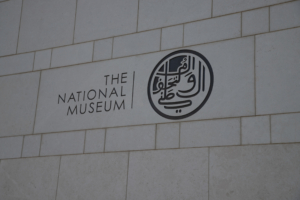
Conclusion
The National Museum stands as proof of Oman’s remarkable experience through time. Our carefully curated galleries showcase ancient artifacts, maritime treasures, and royal collections that illustrate our nation’s 7,000-year legacy.
Each exhibit narrates a distinct story. Visitors discover everything from prehistoric settlements to our seafaring achievements. The displays highlight our Islamic heritage and modern technological breakthroughs. These stories reach every visitor because of our focus on accessibility and education, which makes history relevant to all generations.
The National Museum symbolizes more than a collection of artifacts. It captures Oman’s past spirit and adopts digital advances for interactive learning. Our exhibits and educational programs preserve and share an array of Omani heritage that will inspire future generations. Book Now! and start your unforgettable adventure. Embark on your Oman tour today and uncover the secrets of the Muscat National Museum.
Related Tours
Related Tours
Test2
© 2025 Oman Tour Packages. All rights reserved.
